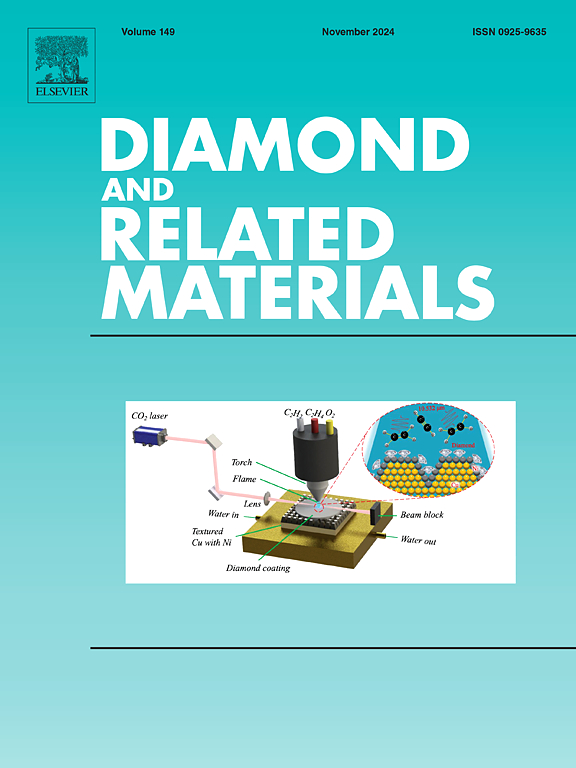竹废料衍生硬碳作为钠离子电池的高性能阳极
IF 4.3
3区 材料科学
Q2 MATERIALS SCIENCE, COATINGS & FILMS
引用次数: 0
摘要
生物质衍生硬碳是最有前途的负极材料之一,可提高钠离子电池(SIB)的商业可行性。在这项研究中,我们采用了一种简单、环保的两步碳化方法来制造高性能硬碳材料,巧妙地将工业竹废料再利用。同时,我们还深入研究了碳化温度对竹废料硬碳微观结构和性能的影响。研究结果表明,在 1400 °C 下制备的硬碳(HCB-1400)具有最理想的钠离子存储能力。HCB-1400 材料不仅能在首次充放电循环中以 30 mA g-1 的电流输出 328.4 mAh g-1 的可逆容量,而且还具有显著的循环稳定性。此外,HCB-1400//Na3V2(PO4)3 全电池组装后的能量密度达到了惊人的 249.25 Wh kg-1,在 1.0 C 的电流密度下循环 200 次后,容量保持率为 93%。本文章由计算机程序翻译,如有差异,请以英文原文为准。

Bamboo waste derived hard carbon as high performance anode for sodium-ion batteries
Biomass-derived hard carbon stands out as one of the most promising anode materials for advancing the commercial viability of sodium-ion batteries (SIBs). In this study, we harnessed a straightforward and eco-friendly two-step carbonization approach to fabricate high-performance hard carbon materials, ingeniously repurposing industrial bamboo waste. Concurrently, we delved into the impact of carbonization temperature on the microstructure and properties of the hard carbon derived from bamboo waste. The findings revealed that the as-prepared hard carbon at 1400 °C (HCB-1400) showcased the most desirable sodium-ion storage capabilities. The HCB-1400 material not only can deliver a substantial reversible capacity of 328.4 mAh g−1 at 30 mA g−1 in its maiden charge-discharge cycle but also display remarkable cycling stability. Moreover, the HCB-1400//Na3V2(PO4)3 full cell, when assembled, exhibited an impressive energy density of 249.25 Wh kg−1, with a capacity retention rate of 93 % after enduring 200 cycles at a current density of 1.0 C. This research underscores the potential of transforming biomass waste into high-performance hard carbon, heralding a sustainable path for SIB applications.
求助全文
通过发布文献求助,成功后即可免费获取论文全文。
去求助
来源期刊

Diamond and Related Materials
工程技术-材料科学:综合
CiteScore
6.00
自引率
14.60%
发文量
702
审稿时长
2.1 months
期刊介绍:
DRM is a leading international journal that publishes new fundamental and applied research on all forms of diamond, the integration of diamond with other advanced materials and development of technologies exploiting diamond. The synthesis, characterization and processing of single crystal diamond, polycrystalline films, nanodiamond powders and heterostructures with other advanced materials are encouraged topics for technical and review articles. In addition to diamond, the journal publishes manuscripts on the synthesis, characterization and application of other related materials including diamond-like carbons, carbon nanotubes, graphene, and boron and carbon nitrides. Articles are sought on the chemical functionalization of diamond and related materials as well as their use in electrochemistry, energy storage and conversion, chemical and biological sensing, imaging, thermal management, photonic and quantum applications, electron emission and electronic devices.
The International Conference on Diamond and Carbon Materials has evolved into the largest and most well attended forum in the field of diamond, providing a forum to showcase the latest results in the science and technology of diamond and other carbon materials such as carbon nanotubes, graphene, and diamond-like carbon. Run annually in association with Diamond and Related Materials the conference provides junior and established researchers the opportunity to exchange the latest results ranging from fundamental physical and chemical concepts to applied research focusing on the next generation carbon-based devices.
 求助内容:
求助内容: 应助结果提醒方式:
应助结果提醒方式:


